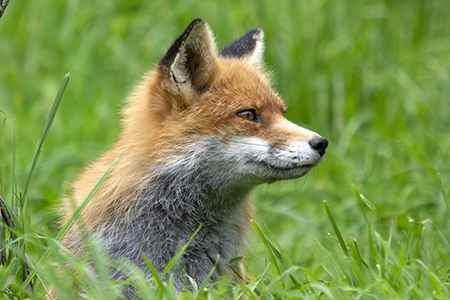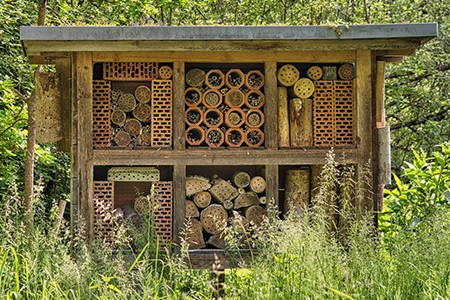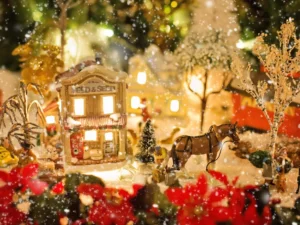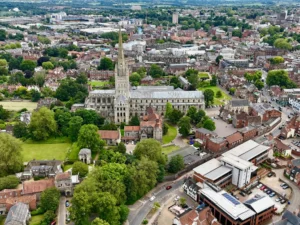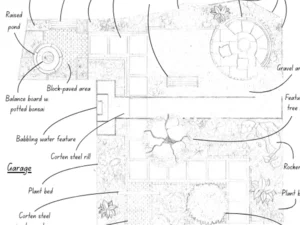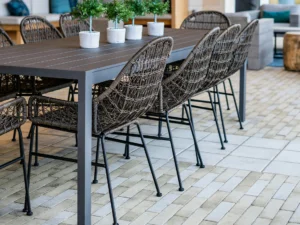Introduction
Creating a wildlife-friendly garden is not only a rewarding endeavour but also a crucial step in preserving biodiversity and supporting local ecosystems. By intentionally designing your outdoor space to accommodate a variety of plant and animal species, you can create a thriving habitat that fosters life and ecological balance.
In this article, we’ll delve into what it means to have a wildlife-friendly garden, exploring the principles of biodiversity and sustainability that underpin this approach. We’ll discuss the importance of protecting wildlife in the UK, highlighting the role gardens play as valuable habitats for various species. Additionally, we’ll introduce you to common animals you may encounter in your wildlife-friendly garden, from birds and butterflies to hedgehogs and bees.
Furthermore, we’ll identify harmful garden features that can pose risks to wildlife, such as pesticides, monoculture lawns, and impermeable surfaces, and provide practical solutions to mitigate these impacts. By implementing these measures, you can create a safe and welcoming environment for wildlife in your own backyard, contributing to the conservation of biodiversity and the enhancement of local ecosystems.
What Having a Wildlife-Friendly Garden Means
A wildlife-friendly garden is more than just a collection of plants; it’s a carefully curated ecosystem designed to support and sustain a diverse array of wildlife species. In a wildlife-friendly garden, every element, from the choice of plants to the layout of features, is intentionally selected to create a welcoming habitat for birds, insects, mammals, and other creatures.
By incorporating native plants that provide food and shelter, installing water sources like birdbaths or ponds, and creating refuge areas such as brush piles or insect hotels, a wildlife-friendly garden offers vital resources for wildlife to thrive. The concept of a wildlife-friendly garden extends beyond simply attracting wildlife; it also emphasises the importance of fostering a balanced and sustainable ecosystem.
By mimicking natural habitats and promoting biodiversity, wildlife-friendly gardens contribute to the health and resilience of local wildlife populations. They provide crucial stepping stones and corridors for wildlife to move through urban and suburban landscapes, helping to mitigate the impact of habitat fragmentation and loss.
Ultimately, being wildlife-friendly means recognising the interconnectedness of all living things and actively working to create spaces where wildlife can flourish alongside humans. It’s about embracing a holistic approach to gardening that prioritises the needs of wildlife while still maintaining a beautiful and functional outdoor space. By embracing the principles of wildlife-friendly gardening, we can not only enhance the biodiversity of our own yards but also make a positive impact on the broader environment.
You can use both UK native and non-native plant species to attract wildlife and it is a common misconception that using non-native species can be harmful to your garden’s eco-system. Of course, there are varieties of invasive species that any gardener should stay away from, however there are loads that will contribute to your garden both aesthetically and in your bid to attract wildlife. To find out more about this subject read our blog article, which looks into the use of native and non-native plants, how they came to this country and the effects they have had on the UK’s horticulture and wildlife.
Importance of Having a Wildlife-Friendly Garden
Wildlife plays a crucial role in maintaining the balance and health of ecosystems, contributing to essential ecological processes such as pollination, seed dispersal, and nutrient cycling. From bees and butterflies pollinating plants to birds and bats controlling insect populations, wildlife provides invaluable services that support the functioning of natural systems.
However, many species face significant threats from human activities, including habitat loss, pollution, climate change, and overexploitation. Protecting wildlife in the UK is not only a moral imperative but also essential for preserving biodiversity and ensuring the long-term health and resilience of ecosystems. With increasing urbanisation and habitat fragmentation, wildlife-friendly spaces like gardens have become increasingly important as havens for wildlife.
By creating and maintaining wildlife-friendly gardens, individuals can play a crucial role in providing refuge and resources for a variety of species, helping to mitigate the impacts of habitat loss and fragmentation. A wildlife-friendly garden serves as a miniature ecosystem within the urban landscape, offering food, shelter, and breeding opportunities for birds, insects, mammals, and other wildlife.
By incorporating native plants, minimising pesticide and fertiliser use, and providing water sources, wildlife-friendly gardens create vital stepping stones and corridors for wildlife to move through urban environments. These green oases not only support local biodiversity but also promote human well-being by fostering connections with nature and creating beautiful and functional outdoor spaces.
By following our guidance on how to keep your garden wildlife-friendly you may find that you attract some desirable feathered fellows. To find out more about the importance of birds in the UK’s food chain and how you can invite them into your space read our blog that has been crafted to focus on this important topic.
Common Animals your Wildlife-Friendly Garden will Attract
Your garden may serve as a bustling haven for wildlife, hosting a diverse array of creatures ranging from tiny insects to larger mammals. Among the common animals you may encounter in your wildlife-friendly garden is an assortment of birds such as robins, blackbirds, and sparrows, each adding their melodic calls to the symphony of nature. Insects like bees, butterflies, and ladybugs flit from flower to flower, pollinating plants and aiding in the reproduction process.
Meanwhile, mammals including hedgehogs, squirrels, and foxes may make occasional appearances, foraging for food and seeking shelter amidst the foliage. These various inhabitants of your wildlife-friendly garden play integral roles in maintaining the balance and vitality of the ecosystem. Birds contribute to seed dispersal and insect control, while insects are vital pollinators crucial for the reproduction of many plant species.
Mammals like hedgehogs and foxes help regulate insect populations and contribute to nutrient cycling through their feeding habits. By providing suitable habitats, food sources, and nesting sites, your garden becomes not only a sanctuary for wildlife but also a thriving ecosystem where each creature fulfils its unique role in the web of life.
It is also important that you protect your pets as much as you protect your garden’s wildlife. To find out more about how you can keep your feline friends safe through appropriate plant choices read our recently published blog article!
Harmful Garden Features and Solutions
Pesticides
Pesticides can harm beneficial insects such as bees and butterflies, as well as other wildlife that may ingest contaminated prey or plants. Solution: Avoid or minimise the use of pesticides and opt for natural pest control methods such as companion planting, biological controls, and habitat creation for natural predators.
Lawn Monocultures
Lawns consisting of only grass offer little in terms of food or shelter for wildlife. They also require frequent mowing, which can disrupt nesting birds and other wildlife. Solution: Incorporate diverse plantings, such as wildflowers, shrubs, and trees, to provide habitat, food, and shelter for a variety of wildlife species.
Chemical Fertilisers
Chemical fertilisers can leach into waterways, polluting water sources and harming aquatic life. They can also disrupt soil ecosystems and affect the health of plants and wildlife. Solution: Use organic fertilisers or compost to nourish your garden soil naturally and sustainably.
Garden Netting
Loose garden netting can entangle and injure birds, small mammals, and insects. It can also pose a hazard to hedgehogs, which may become trapped or injured while foraging for food. Solution: Replace loose netting with solid structures or secure it tightly to prevent wildlife entanglement.
Concrete and Paved Surfaces
Extensive concrete or paved surfaces reduce green space and disrupt natural drainage patterns, limiting habitat for plants and wildlife. Solution: Reduce the amount of hard surfaces in your garden by incorporating permeable paving, gravel paths, or green roofs to allow rainwater to soak into the ground and support plant and animal life.
Firepits and BBQs
While firepits and BBQs can provide enjoyment and entertainment in the garden, they can also pose risks to wildlife and disrupt natural habitats. The smoke and heat generated by these features may disturb nesting birds and small mammals, and discarded food scraps can attract unwanted pests.
To minimise their impact on wildlife, consider locating firepits and BBQs away from sensitive areas such as nesting sites or wildlife corridors. Additionally, ensure that food waste is properly disposed of to prevent attracting scavengers like rats or raccoons. Providing alternative habitats nearby, such as brush piles or birdhouses, can also help mitigate the disturbance caused by these features and provide additional refuge for wildlife in your garden.
Plant Supports
While plant supports such as canes, stakes, and wire fencing serve practical purposes in the garden, they can inadvertently pose risks to wildlife if not properly managed. Sharp edges or protruding wires can injure birds, mammals, and insects that come into contact with them. Additionally, tall plants supported by stakes or canes near fencing may provide convenient perches for predatory birds, increasing the risk to smaller garden visitors.
To minimise these risks and create a safer environment for wildlife, opt for wildlife-friendly plant supports that are designed with rounded edges and smooth surfaces. Alternatively, consider using natural materials such as bamboo canes or willow branches, which are less likely to cause harm to wildlife.
When installing plant supports, ensure they are securely anchored and positioned away from frequently trafficked areas to reduce the likelihood of accidental encounters. Regularly inspect plant supports for signs of wear or damage, and promptly repair or replace any components that could pose a risk to wildlife.
Swimming Pools
Swimming pools can be hazardous for wildlife, especially small animals like frogs, toads, and insects, which may accidentally fall in and struggle to escape. Additionally, birds may mistake pools for water sources and become trapped or injured while attempting to drink or bathe. To make your swimming pool safer for wildlife, consider installing escape ramps or floating platforms to provide animals with a means of exiting the water.
These ramps can be as simple as a floating log or a purpose-built ramp attached to the pool’s edge. Regularly check your pool for trapped wildlife and promptly rescue any animals in distress. Additionally, you can create wildlife-friendly zones around your pool by incorporating native plants and habitat features that provide food, shelter, and nesting sites for local wildlife.
Ponds
While ponds can be valuable habitats for wildlife, especially amphibians, birds, and insects, they can also pose risks if not properly designed and maintained. Shallow edges or steep drop-offs can make it difficult for small animals to enter and exit the water safely. To create a wildlife-friendly pond, consider incorporating gently sloping banks or shallow areas with gradual gradients.
These shallow zones provide easy access for wildlife, allowing amphibians like frogs and newts to enter and exit the water without difficulty. Avoid steep edges or sheer drop-offs, as these can pose hazards for animals and may result in accidental drownings. Planting native vegetation along the pond banks further enhances habitat value by providing cover, nesting sites, and food sources for wildlife.
Additionally, incorporating rocks, logs, and other natural features around the pond creates diverse habitats and microclimates that support a wide range of plant and animal species. Regular maintenance, such as removing invasive plants and debris, ensures the health and vitality of the pond ecosystem, providing a safe and welcoming environment for wildlife to thrive.
NGS and Wildlife-Friendly Gardens
At NGS, we recognise that gardens have the potential to play a crucial role in supporting biodiversity and wildlife conservation efforts. Our dedicated team of experts is passionate about helping our clients create outdoor spaces that not only reflect their personal style and preferences but also contribute positively to the surrounding ecosystem.
When you partner with NGS, you can expect personalised advice and tailored solutions that take into account the unique characteristics of your garden and local wildlife. Whether you’re looking to attract pollinators like bees and butterflies, provide habitat for birds and small mammals, or enhance biodiversity in general, we’re here to help every step of the way.
Our approach to creating wildlife-friendly gardens begins with the selection of appropriate plants and landscaping features. We prioritise native plant species that are well-suited to the local climate and soil conditions, as these plants provide essential food and shelter for native wildlife. Additionally, we can design and install wildlife-friendly features such as ponds, bird feeders, nesting boxes, and insect hotels, which serve as valuable resources for a wide range of species.
Let us help you create a garden that’s as beneficial for wildlife as it is enjoyable for you and your family by getting in touch now via the Contact Us page!
Conclusion
Creating a wildlife-friendly garden involves simple yet impactful changes to your outdoor space, fostering harmony with the natural world while conserving local wildlife. By intentionally selecting plants, features, and practices, you can transform your backyard into a thriving ecosystem. Incorporating native plants, water sources, and sheltered areas attracts birds, butterflies, and beneficial insects, vital for pollination and pest control.
Avoiding harmful practices like pesticides and impermeable surfaces is crucial, to promoting biodiversity and habitat quality. By embracing wildlife-friendly gardening, you contribute to conservation efforts, creating interconnected habitats that support wildlife for generations to come.

